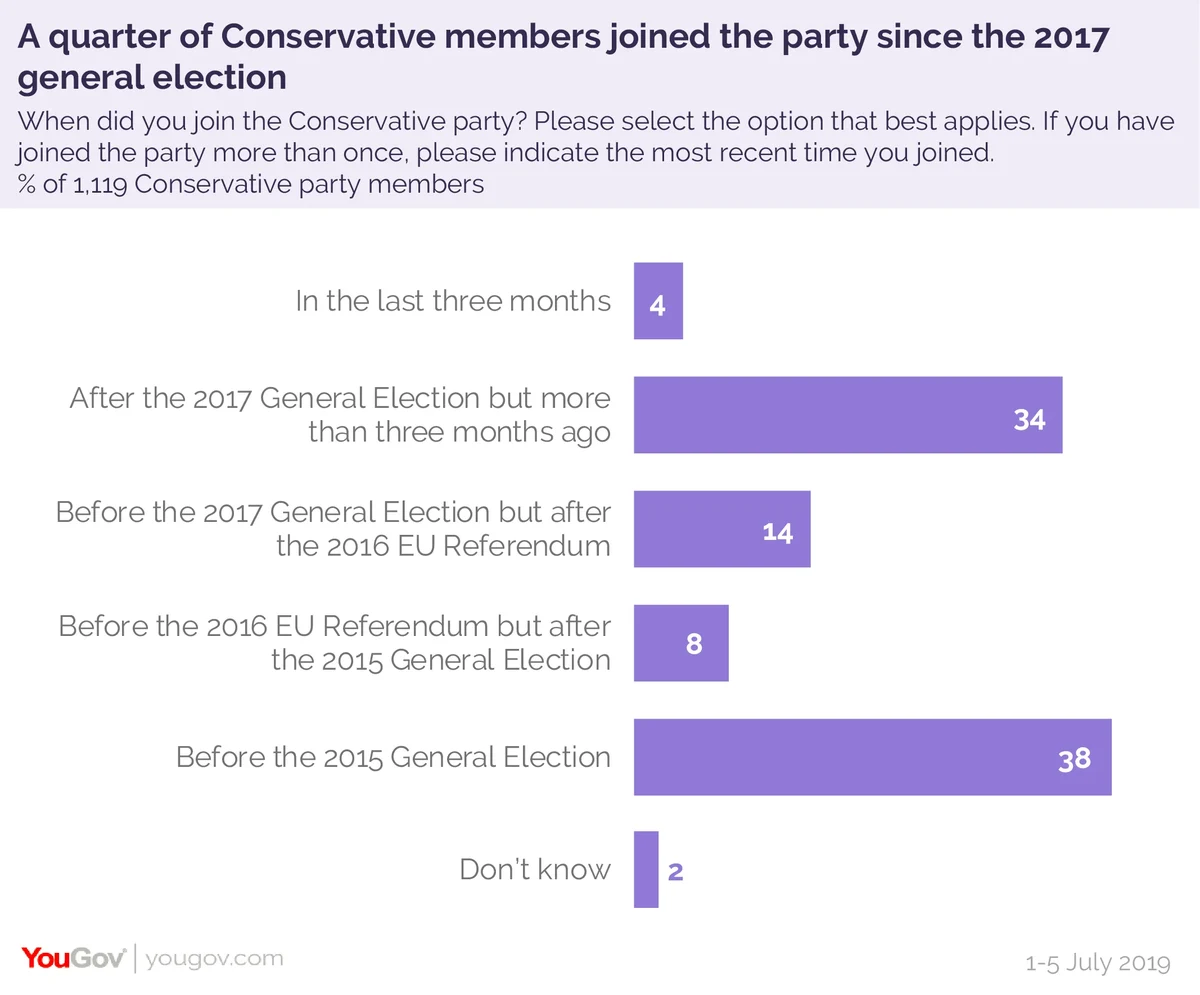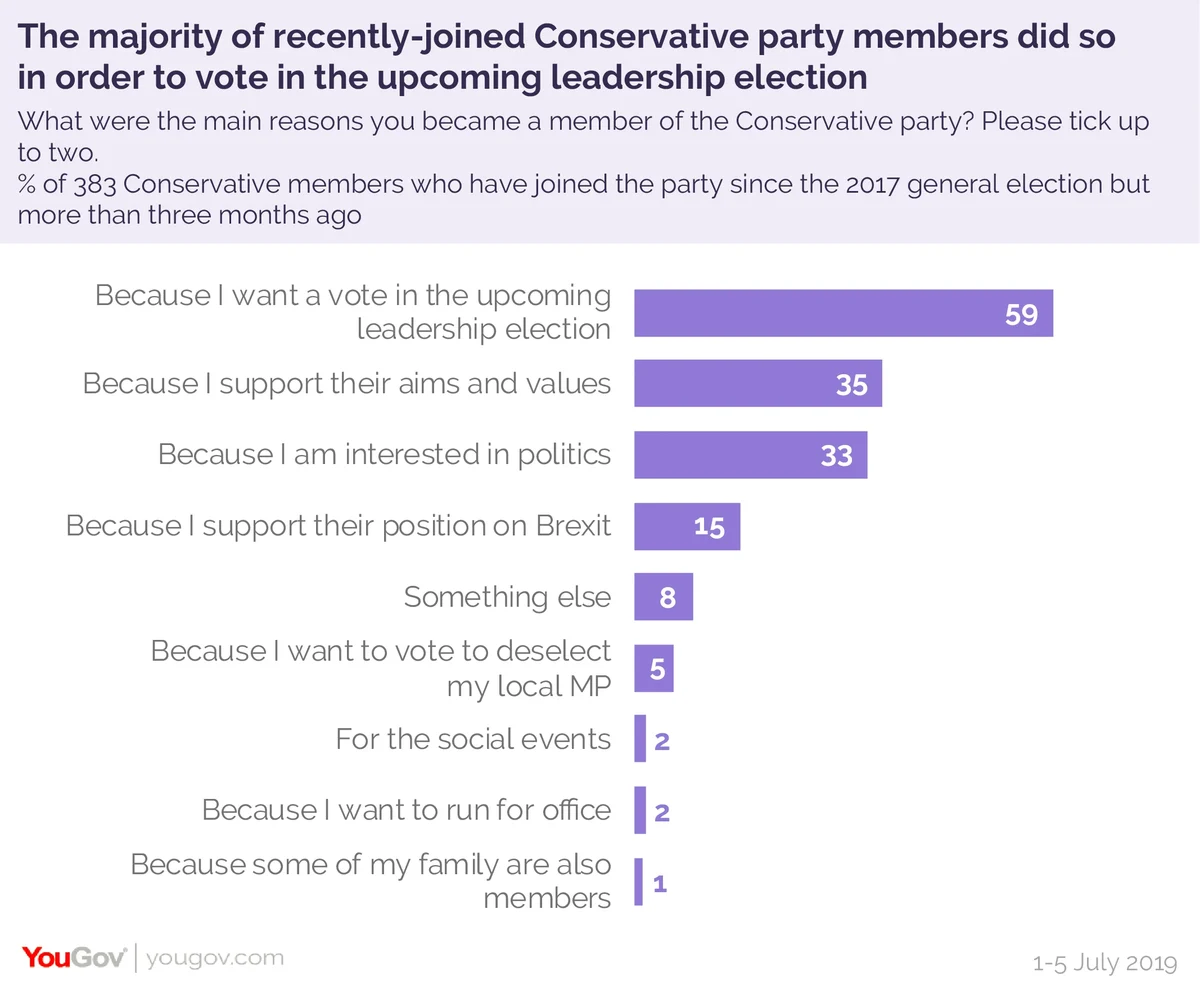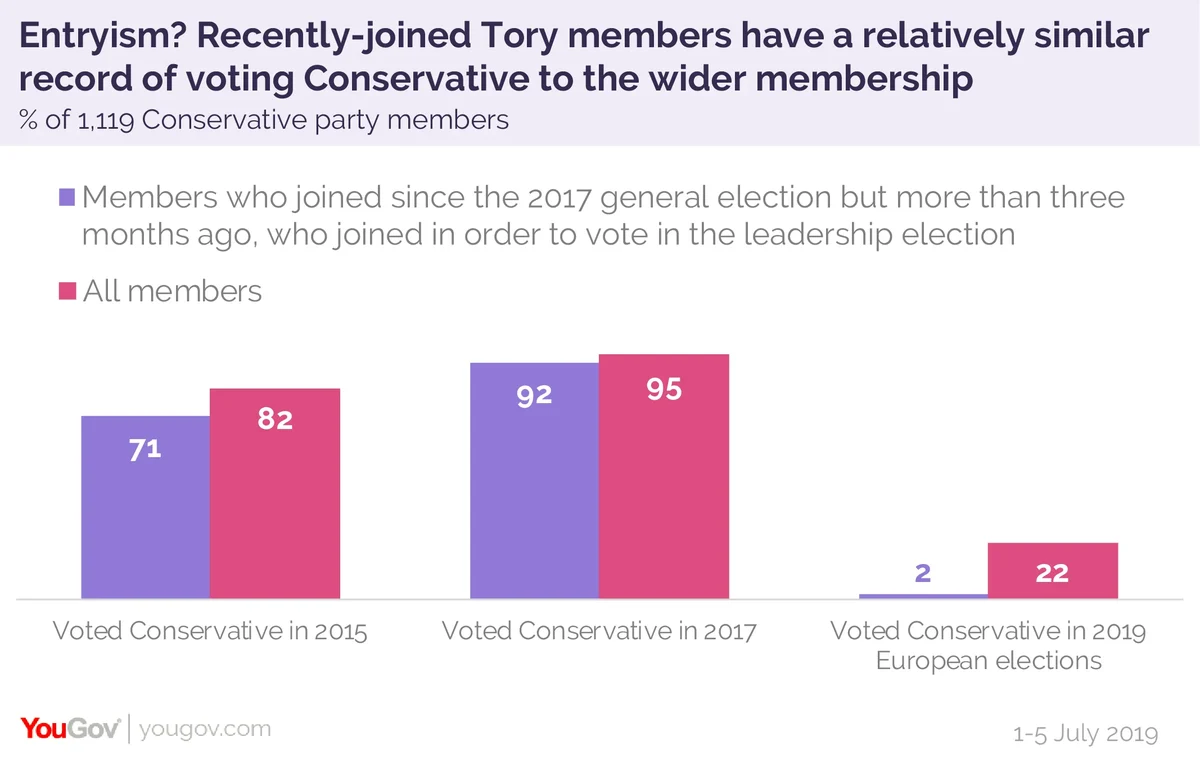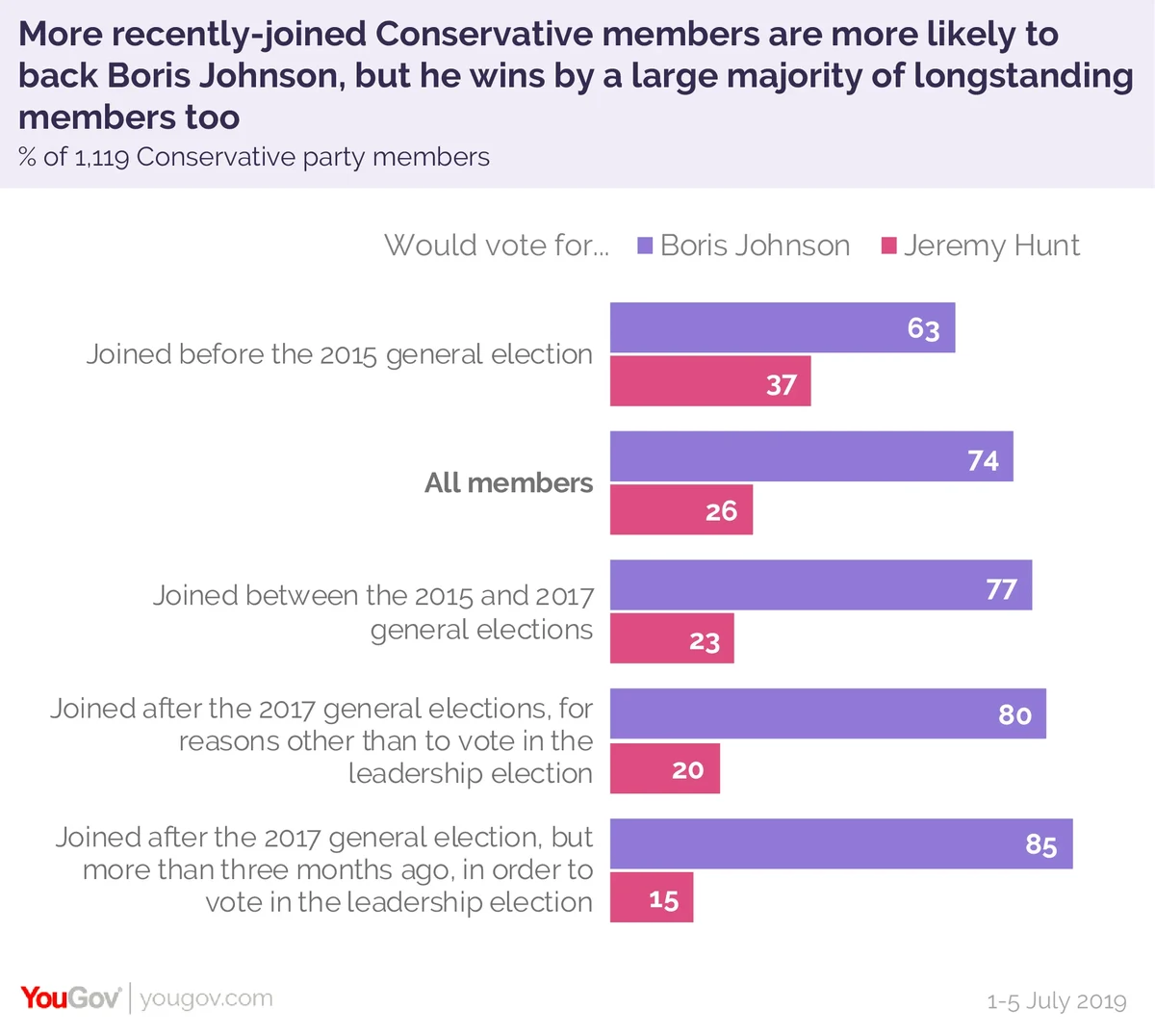Nearly 40,000 people have joined the Conservative Party to get a vote in the leadership election - but they won’t change the result
The Conservative Party is larger than it’s been in years, with Chairman Brandon Lewis claiming that there are now 180,000 paid-up members.
Rising membership is generally considered a good thing and raises crucial funds. But with an ongoing leadership election it also raises questions about legitimacy, and the motivations of recent sign-ups.
This was also true in the 2015 Labour leadership election, when hundreds of thousands of people joined in order to support Jeremy Corbyn - many of whom hadn’t even voted Labour in recent elections.
There are more barriers in place to this happening within the Conservative Party as there is no “registered supporter” scheme, so people have to become full paid-up members, and they also need to have been members for at least three months to vote.
However data from our latest poll of party members still shows that over a third (34%) of those voting joined the party after the 2017 General Election (once it had become fairly obvious that we were heading for a leadership election) but more than three months ago (so they are still eligible to vote).

Nearly six in ten (59%) of these new members said one of their main motivations for joining the party was to vote in the upcoming leadership election, compared to just 35% who said one of their main reason for joining was because they supported the party's aims and values.

This means, in total, one in five (21%) of those eligible to vote for the next Prime Minister have recently joined the Tory party and say one of their main motivations for doing so was to get that vote.
But should the party be concerned by this?
Sharing the aims and values of the Conservative Party might not be the main reason they joined, but that doesn't mean they don't, and also doesn't mean they aren't still loyal Conservatives. The vast majority of them voted for the party in 2017 (92%) and in 2015 (71%).

Almost none of them (just 2%) voted for the Conservatives in May’s European Parliament elections, with the majority of them (89%) did vote for the Brexit Party, but then that is also true for all Conservative party members.
The data does indicates that these members, who joined to vote in the leadership election, do have different voting patterns in the leadership election. Overall, 85% of them are backing Boris Johnson, compared to just 15% who are supporting Hunt. However, Boris Johnson still holds a lead amongst older members as well, with 77% of those who joined between 2015 and 2017 saying they will vote for him, and 63% of those who joined before 2015 giving him their support.

So whilst there are lots of members who have joined the Conservative Party to vote in this leadership election, they are just moving the dial, not changing the result.
Photo: Getty






